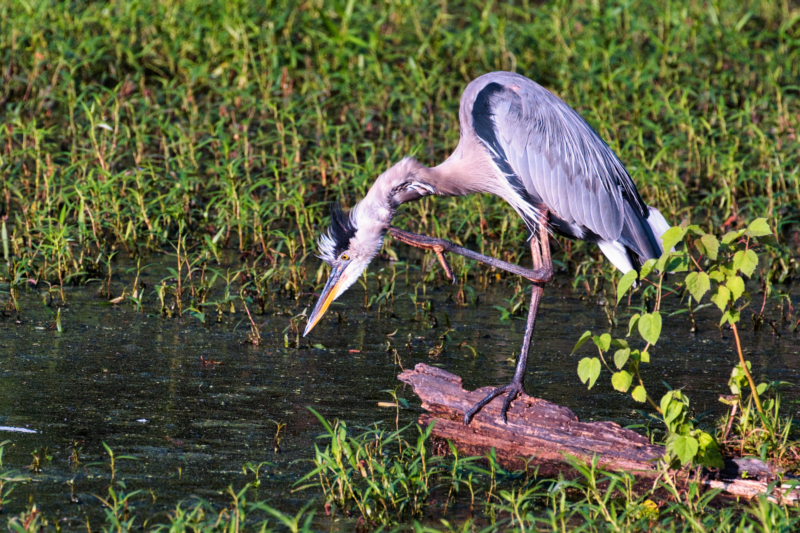I photographed this Great Blue Heron scratching its neck at the Sequoyah National Wildlife Refuge in Oklahoma. Before it started grooming it was trying to spear a meal with its beak. It missed whatever it was going after and went to grooming itself after the miss. It spent time grooming under each wing before moving to the neck area.

Great Blue Herons have a patch of feathers on their breasts and legs that break up into a fine powder. The Herons apply this powder to any slime or other gooey stuff that they may get on their bodies. The powder absorbs the slime.
Another cool thing these Herons have is a fringed claw on their middle toes. They use this claw like a comb to help spread the powder.
The Sally Jones West Causeway has been a great place to park and photograph birds this summer. After sunrise, I drive to this place and look to see what’s feeding on the south side of the auto tour road. This time it was a Great Blue Heron. I approach the Heron keeping an eye out for any sign that it will fly. If I do notice that it doesn’t like my approach I will stop. After the Heron calms I will try getting closer. Depending on the light, I like shooting at an angle with the sun behind me instead of straight out from the bird. The Herons also seem to tolerate this better.
My Fujifilm X-T3 camera was on a bean bag draped over the open window of my pickup with a Canon EF 100-400 mm f/4.5-5.6L IS II lens attached with a Fringer EF-FX Pro.
Camera Settings
- AV Mode
- Aperture: f8
- ISO: 1250
- Shutter speed: 1/1700 of a second
- Exposure Compensation: -0.7
- Focal Length: 400 mm
Here is a photo of an Egret that I photographed on the same log as the Great Blue Heron above: Great Egret With Bluegill
